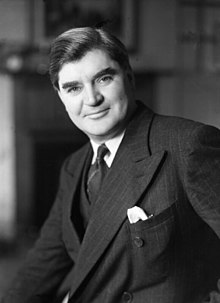Establishing the NHS – how it all started
The Beveridge Report
In 1941, the coalition government commissioned Sir William Beveridge to look at ways of rebuilding Britain following the Second World War.
In 1942, Beveridge published his report, and it contained a series of recommendations. His report noted the need to beat ‘five giants’ to rebuild the country following the war, namely:
- Want – adequate income for all
- Disease – access to healthcare
- Ignorance – a good education
- Squalor – adequate housing
- Idleness – gainful employment.
One of its recommendations to address these was the establishment of a welfare state.
Ideas from the Beveridge Report on how to tackle the five ‘giants’ in society – free medical care, free education, improved housing, social security and full employment.
So. How did the NHS get started?
Aneurin Bevan
The Labour party won the election in 1945, and Welshman Aneurin Bevan was appointed Minister of Health – and he was responsible for establishing the National Health Service.

Aneurin Bevan was inspired by an existing health system in Tredegar, the town where he was born.
Tredegar Medical Aid Society had established a free medical care service in return for financial contributions from its members.
Aneurin Bevan saw the success of this scheme, as the society was addressing the medical needs of 95% of the local population in Tredegar by 1933. This is the model that he used to establish the National Health Service.
The government created 1,000 new operating theatres and tens of thousands of extra beds during the Second World War. People that were injured in the war also received free hospital treatment. This therefore proved that it was possible to run a national health service.
The National Health Act was passed in 1946, and the National Health Service was established in 1948. It was part of a series of changes that were put in place that used money to provide ‘cradle to the grave’ support.
On 5th July we start together, the new National Health Service. It has not had an altogether trouble-free gestation! . . . My job is to give you all the facilities, resources and help I can, and then to leave you alone as professional men and women to use your skill and judgement without hindrance. Let us try to develop that partnership from now on.
Message to the medical profession. Aneurin Bevan1“
What did the National Health Service include initially?
- Free medical treatment for the public.
- Prescriptions for drugs, dental care and optical care.
- One state system that co-ordinated voluntary and local hospitals under the control of health boards.
Why did some object to the National Health Service?
The British Medical Association, the union of the doctors, was of the opinion that they would lose money as a result of the service.
They did not want their members to work solely for the government and fought to keep their independence.
In January 1948, the association held a vote for its members to see whether or not they agreed with the decision to join the NHS:
40,814 voted against joining, and 4,735 voted in favour.
However, following further discussions, Bevan decided that some consultants would be allowed to work in the health service while continuing to treat private patients at the same time, earning high fees.
Bevan said he had ensured the start of the service by ‘stuffing the mouths of the doctors with gold’.
What were the successes of the NHS?
- By 5 July 1948, three quarters of the population had registered with doctors under the new health scheme
- Two months later, 39,500,000 people, or 93% of the population, were registered with the service and over 20,000 GPs were part of it
- It ensured that everyone had access to free healthcare.
What challenges did the NHS face?
In its first year, the NHS cost £248 million to run, nearly £140 million more than the original estimate.
A sum of £2 million had been set aside to pay for free glasses over the first nine months of the NHS, but the amount was spent in a matter of weeks.
The government estimated that the NHS would cost £140 million a year to run by 1950, but by the beginning of 1949 the cost reached around £400 million. It is now over £180 billion per year.
In 1951, the Labour government introduced a fee for some dental treatment and prescriptions and Aneurin Bevan resigned because of this issue.
What happened next?
Over the years, the cost of providing care has increased, putting pressure on the service, and not all elements of the NHS are now free, eg eye tests. The population is also ageing as a result of the care and therefore places more stress on the service.
Since the COVID-19 pandemic, which started in March 2020, the NHS has faced huge pressures. Sections such as mental health services and GPs have been under strain since the pandemic due to staff shortages, increased demand and long waiting lists, for example.
However, healthcare is still free to all members of society. But many believe it needs major reform, and more money may not be the answer.
Summary
We have described establishing the NHS – how it all started. We hope it has been helpful.
Last Reviewed on 6 June 2024
